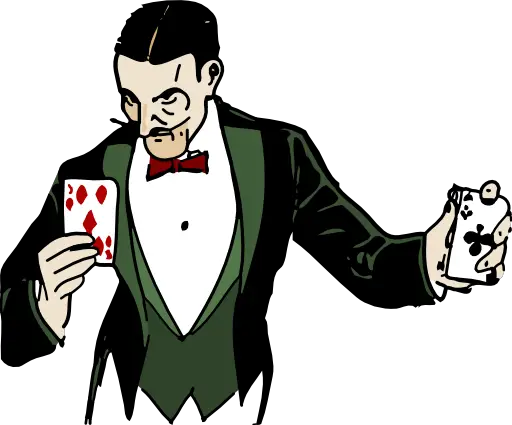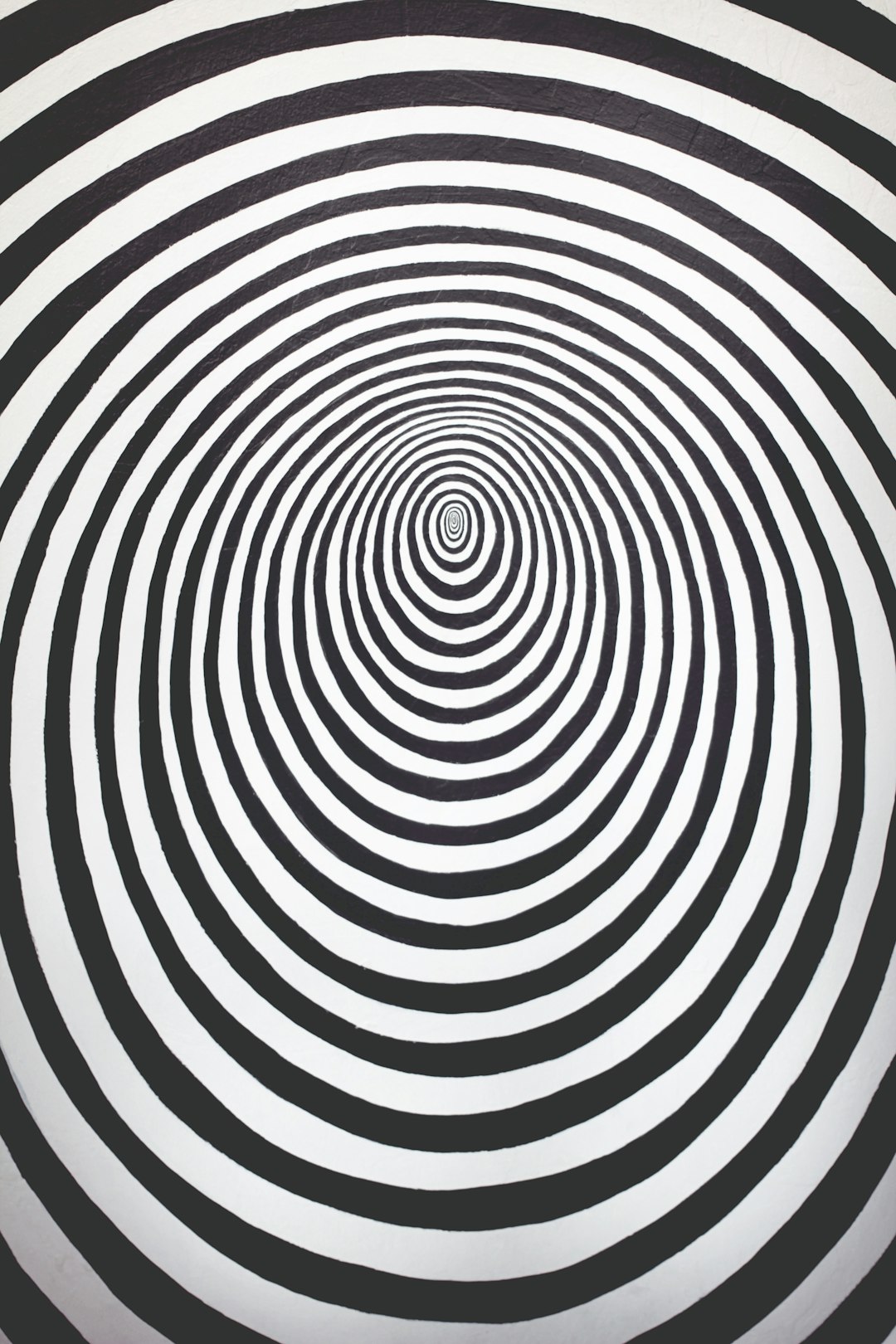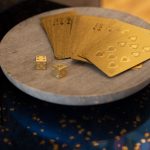Support our educational content for free when you purchase through links on our site. Learn more
25 Mind-Blowing Mind Tricks That Will Leave You Speechless [2024] ✨
Have you ever been amazed by a mind trick that left you questioning your own perception? We certainly have! At Mind Trick™, we are a team of expert magicians and educators who specialize in mind-bending tricks and illusions. Today, we’re going to share with you 25 mind-blowing mind tricks that will leave you speechless! Get ready to have your mind blown! 🎩🔥
Table of Contents
- Quick Answer
- Quick Tips and Facts
- Background: The Fascinating World of Mind Tricks
- Mind Trick #1: The Math and Vegetable Prediction
- Mind Trick #2: The Calmness Provocation
- Mind Trick #3: The Nodding Agreement
- Mind Trick #4: The Elbow High-Five
- Mind Trick #5: The Zeigarnik Effect
- Mind Trick #6: The Child’s Choice
- Mind Trick #7: The Power of Silence
- Mind Trick #8: The Embarrassing Detail
- Mind Trick #9: The Joke’s Audience
- Mind Trick #10: The Whispering Effect
- Mind Trick #11: The Right-to-Left Search
- Mind Trick #12: The Three-Time False Story
- Mind Trick #13: The Power of Priming
- Mind Trick #14: The Favor Effect
- Mind Trick #15: The Overthinking Game
- Mind Trick #16: The Disruptive Patterns
- Mind Trick #17: The Orange Juice Gag Reflex
- Mind Trick #18: The Unknowing Object Exchange
- Mind Trick #19: The Personal Questions in Rock-Paper-Scissors
- Mind Trick #20: The Directional Control
- Mind Trick #21: The Imaginary Card Prank
- Mind Trick #22: The Misdirection
- Mind Trick #23: The Visual Illusion
- Mind Trick #24: The Memory Manipulation
- Mind Trick #25: The Mind Reading
- FAQ
- Conclusion
- Recommended Links
- Reference Links
Quick Answer
Looking for mind-blowing mind tricks that will leave you speechless? We’ve got you covered! Check out our list of 25 mind tricks that will challenge your perception and make you question reality. Whether it’s predicting math problems, provoking irrational responses, or controlling someone’s direction, these mind tricks are sure to blow your mind! Ready to dive in? Let’s get started! 🤯
👉 CHECK PRICE on: Amazon | Walmart | Etsy
Quick Tips and Facts
Before we delve into the mind-blowing mind tricks, here are some quick tips and facts to keep in mind:
✅ Mind tricks are psychological techniques used to manipulate perception and cognition.
✅ These tricks exploit cognitive biases and subconscious patterns in our thinking.
✅ Mind tricks can be used for entertainment, persuasion, or even deception.
✅ Practice these mind tricks responsibly and always respect others’ boundaries.
✅ Remember, the true magic lies in the power of your mind!
Now that you’re armed with these quick tips and facts, let’s explore the fascinating world of mind tricks! 🌟
Background: The Fascinating World of Mind Tricks
Mind tricks have captivated and amazed people for centuries. From ancient mystics to modern-day magicians, the art of manipulating the mind has always been a source of wonder. But what exactly is a mind trick?
A mind trick is a psychological technique that exploits the quirks and biases of human perception and cognition. It involves manipulating someone’s thoughts, beliefs, or behaviors through subtle cues, misdirection, or suggestion. Mind tricks can be used for entertainment, persuasion, or even therapeutic purposes.
Throughout history, mind tricks have been used by illusionists, mentalists, and even con artists to create astonishing experiences and deceive the senses. They tap into the power of suggestion, misdirection, and cognitive biases to make the impossible seem possible.
Now, let’s dive into the mind-blowing mind tricks that will leave you speechless! Get ready to have your mind twisted and turned in ways you never thought possible! 🌀
Mind Trick #1: The Math and Vegetable Prediction
Rating: ⭐⭐⭐⭐⭐
Have you ever witnessed someone predict the answer to a math problem and even guess the vegetable you’re thinking of? It’s mind-boggling! Here’s how it works:
- Ask someone to choose a number and perform a series of simple math operations.
- Then, ask them to think of a vegetable.
- Finally, reveal the predicted answer to the math problem and the vegetable they were thinking of.
It’s as if the mind reader has tapped into their thoughts! This mind trick combines the power of suggestion and mentalism to create a jaw-dropping experience. Give it a try and watch the amazement unfold! 🥕
Mind Trick #2: The Calmness Provocation
Rating: ⭐⭐⭐⭐
In heated arguments or tense situations, staying calm can give you the upper hand. But did you know that you can actually provoke irrational responses in others by acting calmer than them? It’s a mind trick that exploits our natural instinct to match the emotional intensity of those around us.
Next time you find yourself in a heated discussion, try maintaining a calm and composed demeanor. Watch as the other person’s emotions escalate while you remain cool and collected. It’s a powerful way to influence the dynamics of a conversation and gain the upper hand. Keep calm and let the mind trick work its magic! 😌
Mind Trick #3: The Nodding Agreement
Rating: ⭐⭐⭐⭐⭐
Did you know that nodding while asking a question increases the likelihood of agreement? It’s a subtle yet effective mind trick that taps into our subconscious desire to conform and please others.
Next time you want someone to agree with you, try nodding while asking the question. The subtle visual cue of nodding primes their brain to respond positively. It’s a simple yet powerful technique that can influence the outcome of a conversation. Give it a try and see the power of nodding in action! 🙌
Mind Trick #4: The Elbow High-Five
Rating: ⭐⭐⭐⭐
Have you ever missed a high-five and felt a little embarrassed? Well, here’s a mind trick that will ensure you never miss a high-five again!
Instead of looking at the person’s hand, focus on their elbow. Yes, you read that right! By directing your gaze to their elbow, your brain automatically calculates the trajectory and timing, making it nearly impossible to miss. It’s a simple yet effective mind trick that will make you a high-five pro! ✋
Mind Trick #5: The Zeigarnik Effect
Rating: ⭐⭐⭐⭐
Ever had a song stuck in your head and couldn’t get it out? The Zeigarnik effect explains why certain thoughts or unfinished tasks linger in our minds.
According to the Zeigarnik effect, our brains have a natural tendency to remember incomplete or interrupted tasks more than completed ones. So, if you have a song stuck in your head, try thinking about the end of the song. Your brain will perceive it as a completed task and let go of the repetitive loop. It’s a simple mind trick that can free your mind from the clutches of an earworm! 🎵
Mind Trick #6: The Child’s Choice
Rating: ⭐⭐⭐⭐
If you want a child to do something without resistance, here’s a mind trick that works like magic!
Instead of giving them a direct command, present them with two options, both of which lead to the desired outcome. For example, instead of saying, “Brush your teeth,” ask, “Do you want to brush your teeth before or after reading your favorite bedtime story?” By giving them a sense of autonomy and control, they are more likely to comply willingly. It’s a clever way to get things done without the usual resistance! 🧒✨
Mind Trick #7: The Power of Silence
Rating: ⭐⭐⭐⭐
Silence can be a powerful tool in negotiations and conversations. By strategically using silence, you can make the other party uncomfortable and increase the likelihood of them revealing more information or making concessions.
Next time you find yourself in a negotiation or a difficult conversation, try using silence as a tactic. After making a statement or asking a question, resist the urge to fill the silence. Let the other person’s discomfort work in your favor. It’s a mind trick that can give you the upper hand in any negotiation! 🤫💼
Mind Trick #8: The Embarrassing Detail
Rating: ⭐⭐⭐⭐
Want to make a lie more believable? Add an embarrassing detail! This mind trick exploits our tendency to believe something that includes embarrassing or specific information.
When telling a fabricated story, sprinkle in a detail that seems embarrassing or too specific to be made up. It adds a layer of authenticity and makes the lie more convincing. Just be careful not to overdo it or make the detail too outrageous. It’s a mind trick that can make even the most skeptical person question their doubts! 😳
Mind Trick #9: The Joke’s Audience
Rating: ⭐⭐⭐⭐
Have you ever told a joke and noticed that the person you look at first after the punchline is usually the closest to you? It’s a mind trick that reveals our subconscious desire for connection and validation.
Next time you tell a joke, pay attention to who you instinctively look at after delivering the punchline. It’s often the person you feel closest to or seek approval from. It’s a fascinating mind trick that uncovers the dynamics of human connection and social validation! 😄
Mind Trick #10: The Whispering Effect
Rating: ⭐⭐⭐⭐
Did you know that whispering prompts the other person to whisper back? It’s a mind trick that taps into our natural instinct to match the volume and intensity of those around us.
Next time you want someone to whisper, try lowering your voice and speaking softly. The other person’s brain will automatically adjust, and they’ll respond in a whisper as well. It’s a subtle yet effective way to influence the behavior of others. Give it a try and watch the magic of whispering unfold! 🤫
Mind Trick #11: The Right-to-Left Search
Rating: ⭐⭐⭐⭐
When searching for something, have you ever felt like you’re missing items? Here’s a mind trick that can help you avoid that frustration!
Instead of scanning from left to right, try searching from right to left. Our brains are wired to pay more attention to the beginning of a sequence, often causing us to overlook items at the end. By reversing the search direction, you’ll increase your chances of finding what you’re looking for. It’s a simple yet effective mind trick that can save you time and frustration! 🔍
Mind Trick #12: The Three-Time False Story
Rating: ⭐⭐⭐⭐
Did you know that repeating a false story three times with added details can make it more believable? It’s a mind trick that exploits our tendency to trust information that is repeated and elaborated upon.
When trying to convince someone of something, tell them a false story and repeat it three times, each time adding more details. The repetition and elaboration create a sense of familiarity and credibility, making the story more convincing. It’s a mind trick that can make even the most skeptical person question their doubts! 📚
Mind Trick #13: The Power of Priming
Rating: ⭐⭐⭐⭐⭐
Priming is a mind trick that influences our responses by exposing us to certain stimuli beforehand. Here’s an example of how priming can work:
- Ask someone to spell the word “SHOP” out loud.
- Immediately after, ask them if a green light means “go” or “stop.”
The act of spelling “SHOP” primes their brain to think about shopping-related concepts. When asked about the green light, their brain is more likely to associate it with the word “shop” and respond accordingly. It’s a mind trick that demonstrates the power of subconscious priming in shaping our thoughts and behaviors! 🚦
Mind Trick #14: The Favor Effect
Rating: ⭐⭐⭐⭐
Did you know that having someone do a favor for you can make them like you more? It’s a mind trick that taps into the psychological principle of reciprocity.
When someone does a favor for you, they subconsciously justify their actions by convincing themselves that they must like you. It’s a powerful way to build rapport and strengthen relationships. So, the next time you want to connect with someone, ask them for a small favor. The favor effect will work its magic! 🤝
Mind Trick #15: The Overthinking Game
Rating: ⭐⭐⭐⭐
Have you ever played a game where you have to answer questions quickly, only to find yourself overthinking and second-guessing your answers? It’s a mind trick that exploits our tendency to overanalyze and doubt ourselves.
Next time you’re playing a game that requires quick thinking, try asking detailed questions that make your opponents overthink. By introducing complexity and ambiguity, you can throw them off their game and increase your chances of winning. It’s a clever mind trick that can give you the upper hand in any competitive situation! 🎮
Mind Trick #16: The Disruptive Patterns
Rating: ⭐⭐⭐⭐
Patterns are a fundamental part of our perception and cognition. By disrupting patterns, you can confuse and distract someone’s thought process. Here’s how it works:
- Find a pattern that someone is following, such as counting or reciting a sequence.
- Introduce a deliberate disruption or interruption in the pattern.
- Watch as their thought process falters and their focus is momentarily lost.
Disruptive patterns are a mind trick that can be used to create moments of confusion and misdirection. It’s a powerful technique employed by magicians and mentalists to create astonishing illusions. Give it a try and witness the power of pattern disruption! 🌀
Mind Trick #17: The Orange Juice Gag Reflex
Rating: ⭐⭐⭐⭐
Here’s a mind trick that will make you question your own taste buds! Try tricking someone into tasting orange juice immediately after drinking milk. The combination of the two liquids can induce a gag reflex in some people.
The mind trick here lies in the expectation of a familiar taste (orange juice) being altered by the presence of an unexpected flavor (milk). It’s a surprising and sometimes hilarious reaction that showcases the power of our mind’s influence on our physical sensations. Just make sure to do this mind trick with someone who has a good sense of humor! 🍊🥛
Mind Trick #18: The Unknowing Object Exchange
Rating: ⭐⭐⭐⭐
Imagine being able to make someone unknowingly take an object from you. It’s a mind trick that plays with our attention and perception.
Engage someone in a conversation or a distracting activity while subtly placing an object in their hand. By diverting their attention, you can make them take the object without even realizing it. It’s a mind trick that demonstrates the power of misdirection and our susceptibility to subtle manipulation. Use this mind trick responsibly and ethically! 🎁
Mind Trick #19: The Personal Questions in Rock-Paper-Scissors
Rating: ⭐⭐⭐⭐
Rock-paper-scissors is a classic game of chance, but did you know that you can increase your chances of winning by distracting your opponent with personal questions?
While playing rock-paper-scissors, ask your opponent personal questions that require them to think and respond. By diverting their attention, you can catch them off guard and increase your chances of winning. It’s a mind trick that adds an unexpected twist to a simple game! ✊✋✌️
Mind Trick #20: The Directional Control
Rating: ⭐⭐⭐⭐
Did you know that you can subtly control someone’s direction by where you look? It’s a mind trick that exploits our natural tendency to follow the gaze of others.
Next time you want someone to move in a specific direction, subtly shift your gaze in that direction. Their subconscious mind will pick up on the cue and guide their movement accordingly. It’s a subtle yet effective way to influence someone’s behavior without them even realizing it. The power of eye contact is truly remarkable! 👀
Mind Trick #21: The Imaginary Card Prank
Rating: ⭐⭐⭐⭐
Here’s a mind trick that combines magic and misdirection to play a prank on someone. Ask them to imagine a playing card while you secretly eat their food. When they reveal the card they were thinking of, act astonished and claim that you made their food disappear!
This mind trick exploits our tendency to focus on the imagined card, diverting attention away from the disappearing food. It’s a playful and lighthearted way to create a moment of surprise and amusement. Just make sure to have some extra food ready to replace the “vanished” one! ????🍽️
Mind Trick #22: The Misdirection
Rating: ⭐⭐⭐⭐⭐
Misdirection is a fundamental technique used by magicians to create astonishing illusions. It involves diverting the audience’s attention away from the secret moves or actions that make the trick possible.
Misdirection can be achieved through various means, such as using gestures, props, or even verbal cues. By manipulating where the audience focuses their attention, magicians can create moments of wonder and disbelief. It’s a mind trick that showcases the power of perception and the art of illusion! 🎩🔮
Mind Trick #23: The Visual Illusion
Rating: ⭐⭐⭐⭐
Visual illusions are mind tricks that play with our perception and challenge our understanding of reality. They exploit the quirks and limitations of our visual system to create optical illusions that deceive the senses.
From the famous Müller-Lyer illusion to the mesmerizing rotating circles, visual illusions come in various forms and can leave us questioning what we see. They remind us that our perception is not always an accurate representation of the world around us. Prepare to have your mind twisted and turned by these mind-bending visual illusions! 👁️🌀
Mind Trick #24: The Memory Manipulation
Rating: ⭐⭐⭐⭐
Our memories are not as reliable as we think. They can be easily manipulated and influenced by external factors. Here’s a mind trick that demonstrates the power of memory manipulation:
- Tell someone a false story about their past, adding convincing details.
- Repeat the story multiple times, emphasizing the added details.
- Watch as their memory of the event becomes distorted, incorporating the false information.
Memory manipulation is a mind trick that highlights the malleability of our memories and the susceptibility to suggestion. It’s a fascinating yet somewhat unsettling aspect of human cognition. Remember, not everything we remember is as accurate as we believe! 🧠
Mind Trick #25: The Mind Reading
Rating: ⭐⭐⭐⭐⭐
Mind reading is the ultimate mind trick that has fascinated and captivated people for centuries. While true mind reading may be beyond our capabilities, there are techniques that can create the illusion of mind reading.
From cold reading to psychological manipulation, mind readers employ various strategies to gather information and make accurate predictions about people’s thoughts and behaviors. It’s a mind trick that blurs the line between reality and illusion, leaving us in awe of the power of the human mind. Prepare to be amazed by the mind-reading techniques used by master mentalists! 🔮🤯
FAQ
What is a mind trick?
A mind trick is a psychological technique that manipulates perception and cognition to create astonishing experiences or influence behavior. Mind tricks exploit cognitive biases, subconscious patterns, and the power of suggestion to challenge our understanding of reality.
Read more about “What is a mind trick?”
What is the trick of mind readers?
Mind readers use a combination of techniques, such as cold reading, psychological manipulation, and observation, to gather information about a person and make accurate predictions about their thoughts and behaviors. While mind readers create the illusion of mind reading, their abilities are based on psychological principles rather than supernatural powers.
How to trick the human mind?
Tricking the human mind involves exploiting cognitive biases, subconscious patterns, and the power of suggestion. By understanding how the mind works and employing techniques such as misdirection, priming, and pattern disruption, you can create mind-bending experiences and influence the thoughts and behaviors of others.
Read more about “How do Magicians Use Science? … 🎩✨”
Can your mind trick you into thinking things?
Yes, our minds can be tricked into perceiving things that may not be entirely accurate. Optical illusions, cognitive biases, and the power of suggestion can all influence our perception and lead us to believe things that may not align with reality. Our minds are susceptible to manipulation and can be easily influenced by external factors.
Conclusion
Congratulations! You’ve just experienced 25 mind-blowing mind tricks that will leave you speechless! From predicting math problems to controlling someone’s direction, these mind tricks showcase the fascinating world of perception and cognition. Remember, these mind tricks are meant to entertain and amaze, so use them responsibly and ethically.
Now that you’ve unlocked the secrets of mind tricks, why not explore more magic and illusion? Check out our Card Tricks, Levitation, Kids Magic, and Close-up Magic categories for more mind-bending tricks and illusions. And if you’re interested in the science behind magic, don’t miss our article on 10 Mind-Bending Scientific Magic Tricks That Will Blow Your Mind! 2024! The world of magic awaits you! ✨🔥
Recommended Links
- 👉 CHECK PRICE on: Amazon | Walmart | Etsy
- Card Tricks
- Levitation
- Kids Magic
- Close-up Magic
Reference Links
Now that you’re armed with these mind-blowing mind tricks, go out and amaze your friends and family! Remember, the true magic lies within you. Keep exploring, learning, and embracing the wonders of the human mind. Stay curious and never stop being amazed! 🌟







